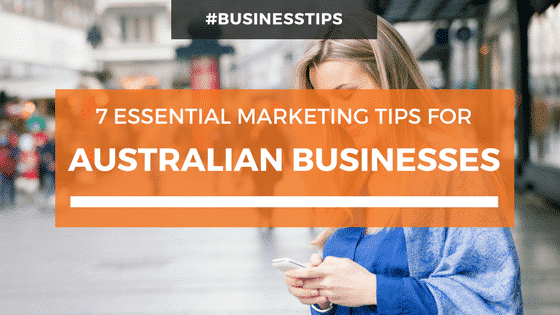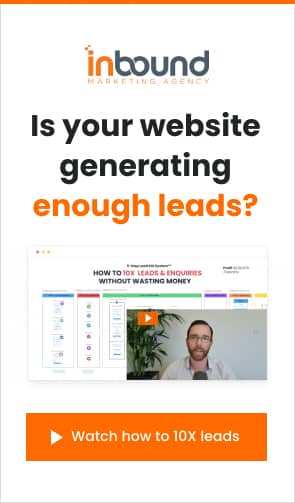Marketing tools are enabling businesses to become more productive and creative.
Want to become more productive & increase sales?
Many businesses are turning to technology to assist with their marketing. There are many marketing tools available to help you with:
- Generating new business
- Report marketing activities
- Communication with prospects
- System Integration
- Etc.
The following are 7 Essential Marketing tools that will help your business boost productivity and improve sales.

Mention
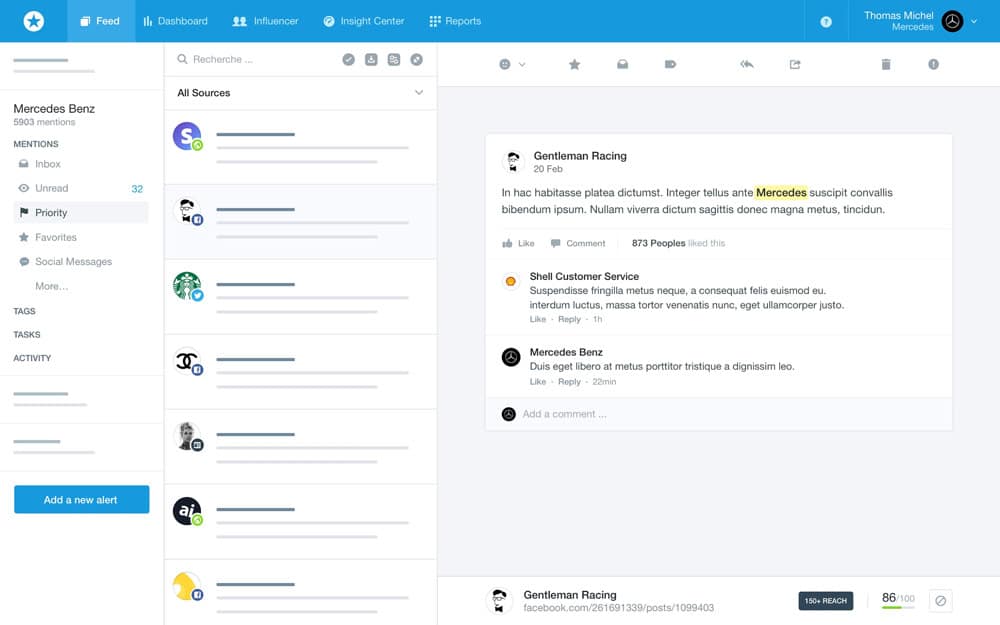
Mention is a media monitoring tool that enables businesses to track their social mentions, analyse competitors, and generate leads.
The two most important features are its Crisis Management and Sentiment Analysis features. Mention tells you the moment things become serious with the Crisis Management feature, allowing you to:
- Be alerted so you can react to the good or bad news.
- Respond quickly and directly on your social media accounts.
- Monitor from anywhere.
- Share alerts with others, assign tasks, respond together to prevent damage.
- Automatically generate reports tracking your progress.
You can easily identify positive and negative mentions of your brand and competitors around the web with the Sentiment Analysis feature. It allows you to:
- Filter by sentiment, influence, source, and other metrics to find the most important
- Directly access your social media campaigns or connect your Buffer account to schedule social updates in advance.
- Filter your mentions based on the reach of the person talking. You’ll immediately know who is a valuable contact, and who to reach out to for more favourable press.
- Receive alerts to tell you the moment your keywords become popular. If your brand goes viral, you need to know so you can either share the good news or put out the flames.
Google Business
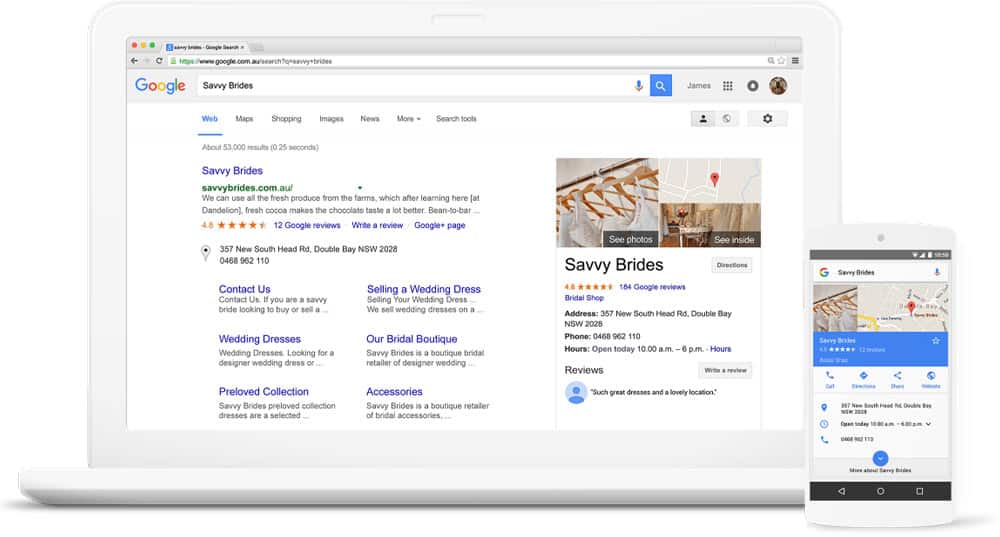
Google Business is a free service that allows businesses to create and control their Google Maps listing on Google search results.
When people search “[your-product/service] + [location]” your business can be found.
The tool has a range of features that benefit a business owner in creating their own unique listing; giving them more control and insight in regards to the end user’s interaction with their business. These features give you the ability to:
- Edit business details at any time.
- Be the first to know when people are talking about your business, respond to them as the business owner, and track your ratings over time.
- Learn about your customers and how they’re interacting with your business.
- See the number of clicks on your business’s phone number, and website visits you receive.
- See how many times customers find your business on Google and view trends over time.
- See how many people are clicking to get directions to your business.
The point of Google Business is to get you in front of your customers and share what’s best about the business through the extra inclusion of pictures, virtual tours, or reviews.
Survey Monkey
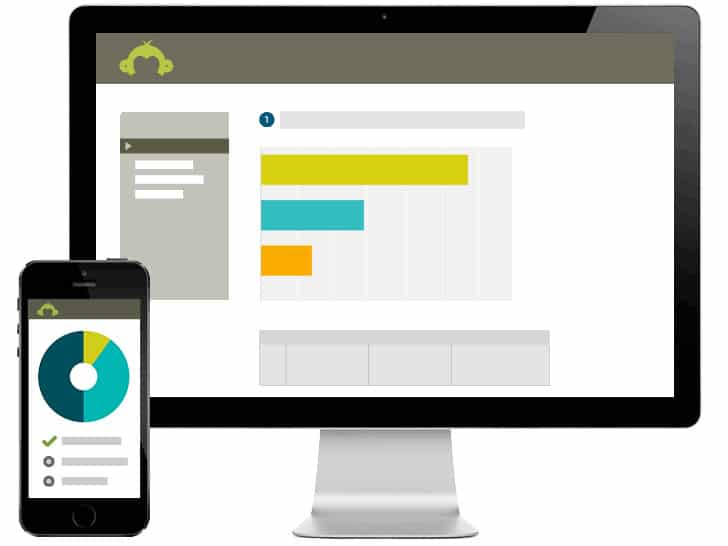
SurveyMonkey is the world’s most popular online survey software. It allows the user to customise their survey questions, distribute the questionnaire on the web, and start collecting responses in real time. The Analyze tool can help businesses turn survey data into insights and create professional reports.
One of the most popular tools than SurveyMonkey provides is their Customer Satisfaction surveys, also known as CX (Customer Experience). It is a tool with powerful features designed to collect, understand, and act on customer feedback. It allows the user to:
- Trigger personalised surveys through multiple channels.
- Identify improvement areas using advanced analytics.
- Share insights amongst a team.
- Close the loop with your customers by triggering follow-up actions.
Monitoring and optimising customer satisfaction at all relevant interaction points reveal what actions to take to drive customer loyalty and revenue growth.
Survey Monkey’s surveys are based on the Net Promoter Score® (NPS®) which is the most widely used way to measure customer loyalty. For Australian businesses, they can accurately measure customer loyalty and understand the drivers behind their NP, calculate ROI to invest intelligently, and accelerate growth.
Local Directories

A local business listing is an online profile that contains at least a name, address and phone number. This works to build up your online credibility so that Google and others can verify that you are who you say you are. Many websites allow you to create a listing for free such as Yellow Pages, True Local and Yelp.
It serves the purpose of making your business visible on the internet; with each listing building your credibility, and increasing your chances of being found by customers.
The more citations that you have and the more sites you are listed on increase the accuracy of your businesses listing. This is important as this will increase your ranking in local searches above other business that have few, unfinished, or wrong listing details.
To qualify for a local business listing in any index, your business must meet all four of the following criteria:
- Have a business name
- Have a local phone number that matches your city of location (not a shared phone number, toll-free number, or call tracking number)
- Have a dedicated physical street address (not a shared address, PO box, or virtual office)
- Make face-to-face contact with your customers (business is not conducted virtually)
Facebook Audience Insights
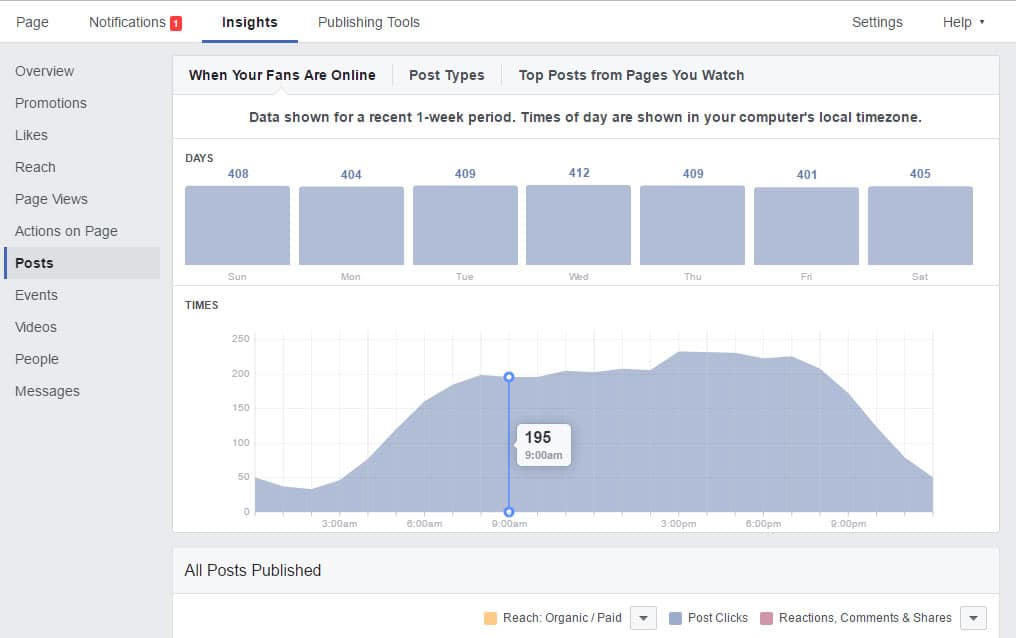
Facebook Audience Insights is a tool designed to help businesses learn more about their target audiences, including aggregate information about geography, demographics, purchase behaviour and more.
By collating information about your target audience, Audience Insights helps equip businesses with the ability to deliver more concise and appropriate messages to their audience.
Using Audience Insights, businesses can get aggregate and anonymous information such as:
- Demographics — Age and gender, lifestyle, education, relationship status, job role, and household size
- Page likes — The top Pages people like in different categories, like women’s apparel or sports
- Location and language — Where people live, and what languages they speak
- Facebook usage — How frequently people in your target audience are logging onto Facebook and what device(s) they are using when they log on
- Purchases activity — Past purchase behaviour (i.e. heavy buyers of women’s apparel) and purchase methods (i.e., in-store, online)
You can view this information for three different groups of people:
- People on Facebook (the general Facebook audience)
- People connected to a Page or event
- People in Custom Audiences already created (an audience made up of current customers)
Ready to get started with Facebook Business Manager? Read our guide How to Create a Facebook Business Page
Google Trends
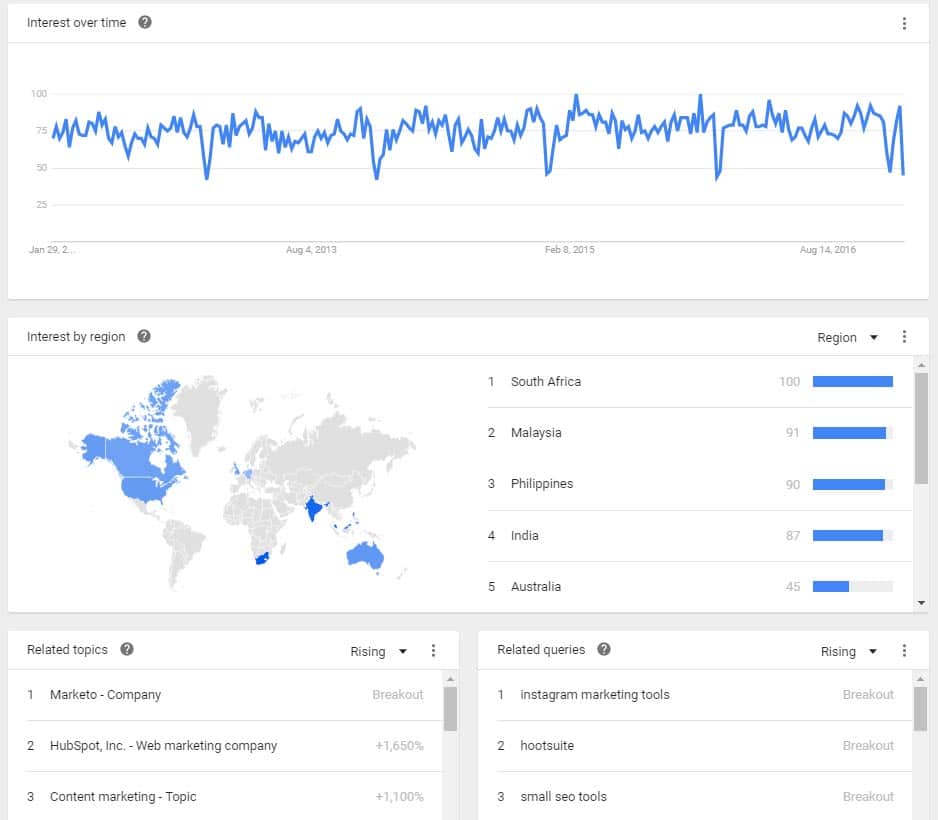
Google Trends is a great tool to explore a business’s target audience interests. Whether exploring niche or general industry topics, it can demonstrate where interest is growing or shrinking.
It allows the user to compare how search terms are performing over a period of time. This is a powerful tool in the creation of content and where businesses should be focusing their marketing efforts.
If a business is unsure of what they should be communicating to their customers, they can use the ‘related searches’ tool to show growing query trends and hit on what exactly the customers are searching for online. This also helps in the creation of evergreen content based on ongoing trends (which are a proven performer) rather than rushing to compete over a short fad.
Choosing the right keywords is a crucial part of any campaign’s success. Google Trends also allows users who want a deeper integration into their activities the ability to find sites and articles for backlinks, a handy trick for building website reputation and credibility.
With this sort of data at use, businesses can find out what is effective and what isn’t.
Zapier

Zapier helps automate tasks between two applications/software.
The user sets up a “Zap” i.e. add Gmail Contacts as Mailchimp subscribers. The aim is to automate as much of the small pieces of work as possible so the user can work on more important business tasks.
At the moment, it can be used with over 750 apps in a growing list including Gmail, Google Docs, Evernote, Google Calendar, Dropbox, Asana, Google Drive, Basecamp, Facebook Pages, MailChimp, Trello, Twitter, HipChat, GitHub, SalesForce, Podio, InfusionSoft, Wufoo, Box, LinkedIn, WordPress, Xer, Quickbooks, Zoho CRM, and many more without any code required. It operates based on three important aspects:
- You can start Workflows from any App.
- Zapier will finish routine tasks automatically while you work on other things.
- It works off a Fill-In-The-Blank setup, customised for the business.
A business can choose to create its own workflow, specifically to reflect their processes or choose among thousands of online templates that have been created and shared by other Zapier users.
Businesses that look to capitalise on their current and potentially growing audience will find these tools essential to the inbound marketing process. When used properly, the kind of information these tools can provide will become essential to the marketing plan and everyday efforts of any business.

